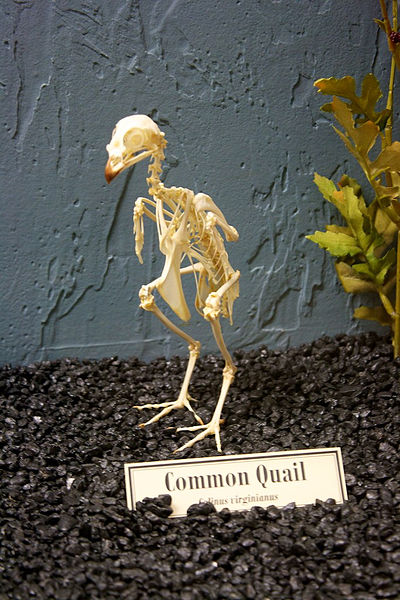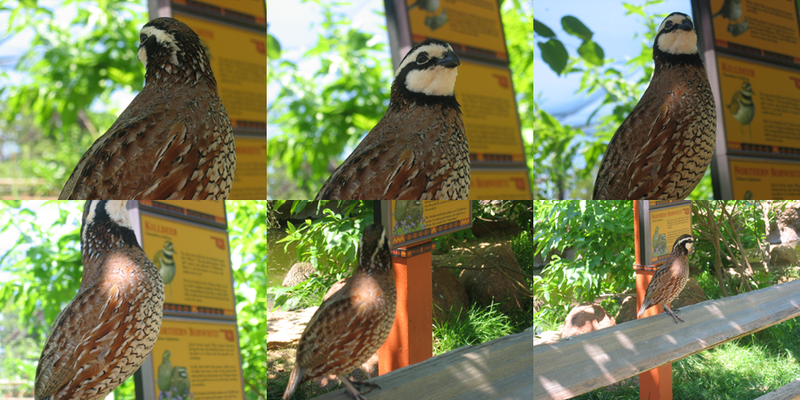Adaptation
The bobwhite quail isn't an extremely big organism.It only weighs about 6-8 ounces and usually only gets to about 10 inches long, but it has some pretty amazing adaptations:
Circulatory System: The bobwhite quail and birds in general pretty much have the same circulatory system that mammals do. They have a 4 chambered heart composed of 2 atriums and 2 ventricles. In their circulatory system they also have 2 circuits. One circuit brings deoxygenated blood to the lungs to release carbon dioxide and bring in oxygen. The other circuit brings oxygenated blood throughout the body to deliver oxygen and take out carbon dioxide.
Gas Exchange:
Perhaps the most impressive adaptation birds have is how they
exchange gases. Their ventilatory system consists of a trachea,
lungs, and anterior and interior air sacs. These air sacs are
connected to the trachea and lungs and give birds the advantage of
one of the best ventilatory systems in the animal kingdom. When a
bird inhales the new air gets moved into the posterior air sacs.
During exhalation the old air gets released back into the
environment from the anterior air sacs and the air that was in the
posterior air sacs moves into the lungs.

Digestive System: The digestive tract of the bobwhite quail is pretty complex. First, food it taken in by the beak. After the food enters the bird it will go down the esophagus and end up in the crop. The crop is used as temporary storage until the food can further be digested. Next the food enters the stomach, which is composed of the proventriculus and the gizzard where food is better digested. Once it is done being digested the food will enter the intestines to be absorbed into the body. There is one final place food will go for one last attempt to absorb the nutrients and that is the caecum. After the caecum the food is pretty much useless and is released back into the environment as feces. Click the link to learn more about the Digestive Tract of birds.
Sensory Systems: The bobwhite quail has a central nervous system, meaning they have a brain, a backbone with vertebrae, and a central nerve cord. They also have eyes that allow them to see their environment. This sensory system helps them sense signals in the environment, interpret the signals, and react to the signals. This helps them not only avoid predation but also helps them obtain food.
Bones: Another unique adaptation the bobwhite quail has is hollow bones. Having hollow bones makes them less dense and allows them to fly.
Wings: Although the bowhite quail has wings that allow them to fly, they usually prefer to walk or run instead. Flying is something they only do when trying to escape predators.
Check out what the bobwhite quail eats and how it acquires food on the Nutrition page
